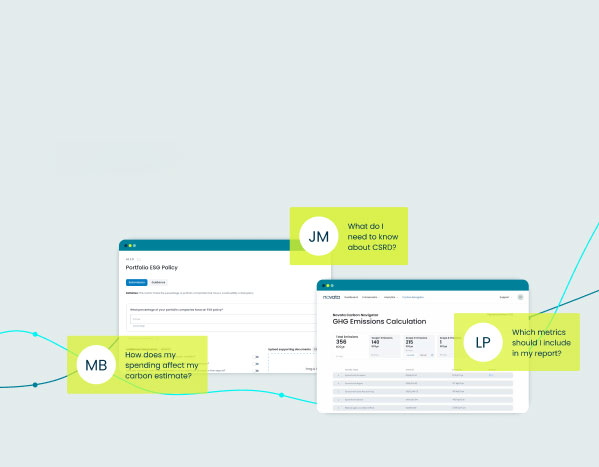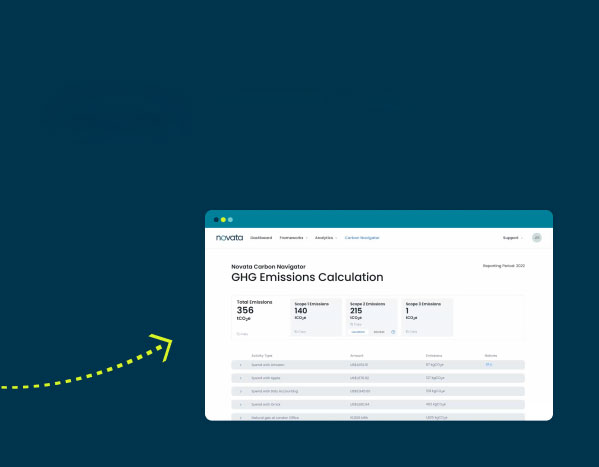In the landscape of carbon measurement, financed emissions stand out as the most important category of Scope 3 emissions for investors to measure, analyze, and disclose. According to a 2021 report by the Center for American Progress and the Sierra Club, the 18 largest US banks and asset managers were responsible for financing the equivalent of around 2 billion tons of carbon dioxide equivalent in 2020. To put that in perspective, that’s roughly a third of the United States’ national greenhouse gas (GHG) inventory for the same period. For banks and asset managers alike, investment decisions significantly impact the environment via financed emissions. Simultaneously, carbon-intensive assets in portfolios constitute a specific form of climate risk.
Additionally, as climate disclosure regulations in Europe (e.g., CSRD) and the US (e.g., California & SEC Climate rules) come into effect over the next two to three years, public and private market participants will be required to report on emissions across all three scopes, as well as the financial impact of climate on businesses and investments. This article provides an overview of the basics of financed emissions and how general partners (GPs) in private equity, private credit, and venture capital can track them.
What Are Financed Emissions?
Financed emissions include Scope 3 emissions associated with a GP’s investments. Put another way, a GP’s financed emissions are the Scope 1 and 2 emissions of its investee companies but scaled by the level of the GP’s investment in each company. Investments are categorized as a downstream Scope 3 category of emissions because providing capital or financing is a service provided by the reporting financial institution. This category of emissions applies to investors (i.e., firms that invest to make a profit) and companies that provide financial services. Investors that are not profit-driven, such as multilateral development banks, can also report on financed emissions.
Why Should GPs Care About Financed Emissions?
Financed emissions are important because they represent the largest source of emissions, and risk, for GPs. In aggregate, a portfolio of investee companies comprises more emissions than other Scope 3 emissions, such as from business travel. Additionally, the results of financed emissions analysis often surprise GPs as they may discover that their most carbon-intensive assets may not be the ones they initially anticipated. That is because GPs can immediately see that the carbon intensity of investments depends on a suite of factors, including the asset class, their ownership stake in each investment relative to the portfolio, and the relative emissions of each investee company. Put simply, traditional due diligence and intimate knowledge of their investments alone may not help GPs identify hidden climate risk within their portfolios, but financed emissions analysis can reveal emissions hotspots.
What Guidance Should GPs Rely On to Calculate Financed Emissions?
The Greenhouse Gas Protocol’s (GHG Protocol) guidance is recognized as the gold standard for carbon accounting. However, measuring financed emissions demands a more nuanced approach. Here, the Partnership for Carbon Accounting Financials (PCAF) is the key resource for GPs, providing detailed guidance that complements and expands on the GHG Protocol’s guidance for calculating emissions from investments. However, while it covers many asset classes, PCAF’s guidance does not apply to all investment strategies. Notably, PCAF has yet to release guidance tailored for private equity and private credit. Currently, the recommendation for GPs in private equity, private credit, and venture capital is to apply PCAF’s existing guidance for the asset classes of unlisted equity and business loans to private companies.
What Data Do GPs Need to Calculate Financed Emissions?
To accurately calculate financed emissions, GPs need access to two crucial types of data: 1) GHG emissions data from the companies they’ve invested in and 2) detailed information about their financial stake in these companies. At first glance, this might seem straightforward. Yet, the reality is far from simple. The challenge for many GPs lies in the complexity of compiling GHG inventories from a diverse portfolio of investee companies. These companies can vary widely in terms of operations, stages of growth, and their capability or willingness to provide accurate carbon emissions data. While GPs typically maintain excellent records of their financial investments, harmonizing this data with the specific requirements for calculating financed emissions, as outlined by PCAF, is often where GPs request outside help from subject matter experts.
GHG Data Collection
GPs need to obtain GHG inventories that include Scope 1 and Scope 2 emissions data from their portfolio companies. If available, Scope 3 data is also valuable, given that it contributes upwards of 90% of total emissions for companies regardless of industry. In cases where direct data collection of GHG data from investee companies is not feasible, GPs might resort to using proxy data to estimate the emissions of their portfolio companies. While quick and practical, this approach typically yields lower data quality, and data reliability is important for assessing climate risk within a portfolio and determining actions.
Financial Data Requirements
Financial data pertains exclusively to a GP’s investment data, which is not usually possessed by the investee companies. This data determines the GPs’ financial stake in their portfolio companies, which is important since it directly affects the financed emissions calculations. However, the financial data necessary for calculating financed emissions differs based on the asset classes involved. GPs should take careful note of the requirements for their investment approach before they begin collecting data. For example:
For Unlisted Equities (Private Equity), GPs need
- The number of shares the financial institution holds in each portfolio company (PC).
- The total number of shares issued by each PC
- The total equity and debt of each PC
For Business Loans to Private Companies (Private Credit & Venture), GPs need
- The total outstanding loan amount for each PC
- The total equity and debt of each PC
What Are the Current Challenges with Calculating, Analyzing, and Reducing Financed Emissions?
General Partners face several key challenges when it comes to the calculation, analysis, and reduction of financed emissions:
- Acquiring accurate GHG emissions data from portfolio companies is essential yet challenging.
- GPs must effectively merge financial data with GHG emissions data to calculate financed emissions, a task that requires precise data management and expert judgment.
- The need for in-house subject matter expertise to understand PCAF guidance and to analyze the calculations adds another layer of complexity.
- Lastly, existing methodologies for measuring and reducing financed emissions require further development from standard setters like PCAF to align with global emissions reduction targets, such as those set by the Paris Agreement. As has been shown, the current focus on lowering the emissions intensity of investment portfolios does not guarantee a reduction in absolute emissions overall. This is partly because of the way financed emissions are calculated and partly because assets deemed carbon-intensive can simply be transferred between GPs without any net decrease in emissions. Furthermore, relying solely on a divestment strategy to reduce financed emissions misses the opportunity for GPs to engage directly with carbon-intensive assets to drive value in the transition towards a lower-carbon economy.
Calculating Financed Emissions with Novata
Financed emissions are a critical component of a GP’s emissions footprint, and getting started with these calculations is crucial as the private markets face increased scrutiny. Novata supports GPs with the technology and expertise to simplify data collection aligned with PCAF standards and carbon-related regulations, address data gaps, calculate financed emissions, and uncover valuable insights that reveal carbon-intensive assets. Learn more about Novata’s streamlined approach to carbon data management and how we can help your firm get started.






